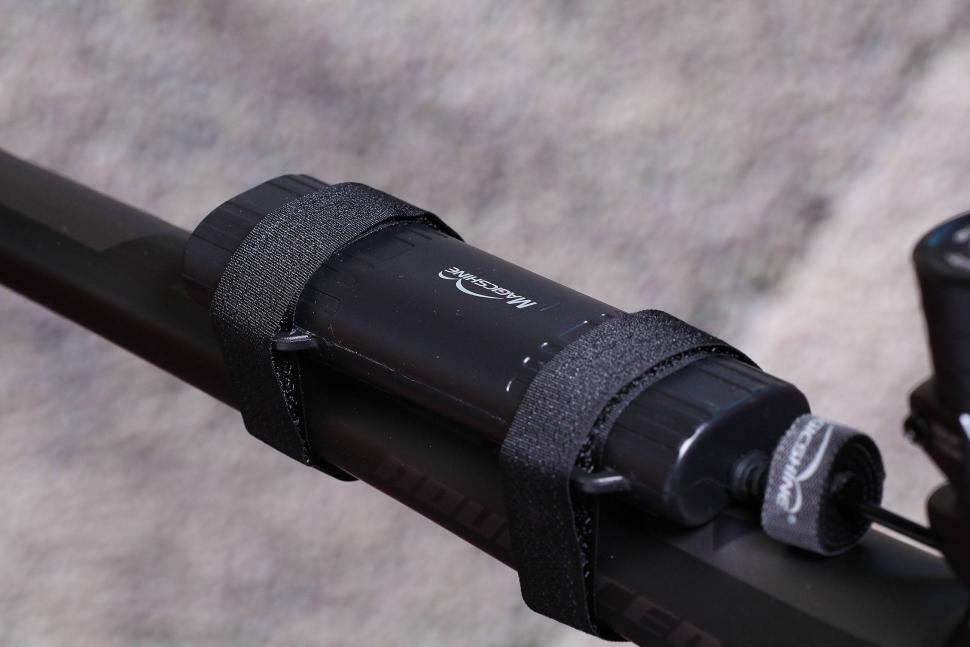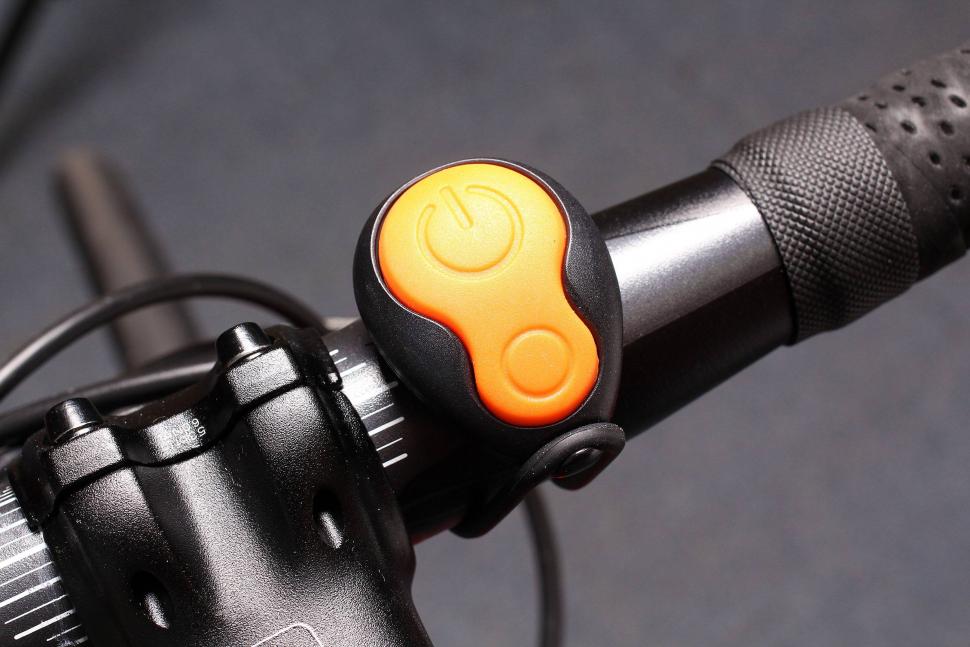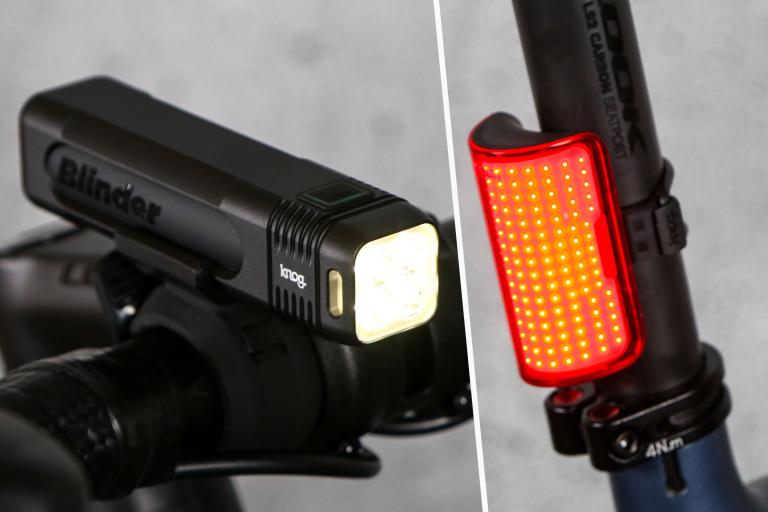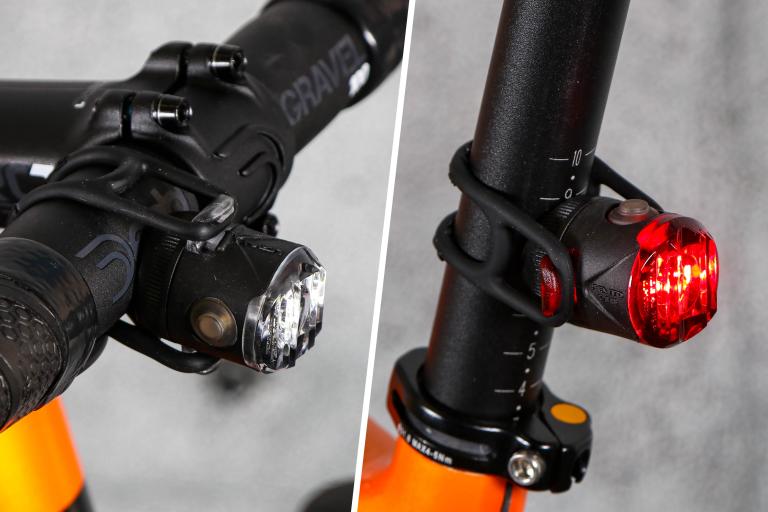- News
- Reviews
- Bikes
- Accessories
- Accessories - misc
- Computer mounts
- Bags
- Bar ends
- Bike bags & cases
- Bottle cages
- Bottles
- Cameras
- Car racks
- Child seats
- Computers
- Glasses
- GPS units
- Helmets
- Lights - front
- Lights - rear
- Lights - sets
- Locks
- Mirrors
- Mudguards
- Racks
- Pumps & CO2 inflators
- Puncture kits
- Reflectives
- Smart watches
- Stands and racks
- Trailers
- Clothing
- Components
- Bar tape & grips
- Bottom brackets
- Brake & gear cables
- Brake & STI levers
- Brake pads & spares
- Brakes
- Cassettes & freewheels
- Chains
- Chainsets & chainrings
- Derailleurs - front
- Derailleurs - rear
- Forks
- Gear levers & shifters
- Groupsets
- Handlebars & extensions
- Headsets
- Hubs
- Inner tubes
- Pedals
- Quick releases & skewers
- Saddles
- Seatposts
- Stems
- Wheels
- Tyres
- Health, fitness and nutrition
- Tools and workshop
- Miscellaneous
- Cross country mountain bikes
- Tubeless valves
- Buyers Guides
- Features
- Forum
- Recommends
- Podcast
review
£100.00
VERDICT:
Decent run-times and good value for money for commuting and audax/touring, but not as bright as claimed
Weight:
335g
Contact:
At road.cc every product is thoroughly tested for as long as it takes to get a proper insight into how well it works. Our reviewers are experienced cyclists that we trust to be objective. While we strive to ensure that opinions expressed are backed up by facts, reviews are by their nature an informed opinion, not a definitive verdict. We don't intentionally try to break anything (except locks) but we do try to look for weak points in any design. The overall score is not just an average of the other scores: it reflects both a product's function and value – with value determined by how a product compares with items of similar spec, quality, and price.
What the road.cc scores meanGood scores are more common than bad, because fortunately good products are more common than bad.
- Exceptional
- Excellent
- Very Good
- Good
- Quite good
- Average
- Not so good
- Poor
- Bad
- Appalling
The Magicshine MJ-902 is a good front and rear light combination that is ideal for longer-distance commuting away from city lights, with decent run-times and easy operation. It's not as bright as claimed, though it's still plenty bright enough for dark country lane riding, but having to cycle through 'off' to get back to full power is a bit of a let-down at this price.
The MJ-902 consists of a very compact front light with four modes (three steady, one flash), a tiny rear light, a battery pack and a remote button. The 5.2Ah 7.4V battery pack provides a massive 2,000-lumen output via two Cree XM-L2 LEDs and a claimed run-time of 3.2 hours in the brightest setting, over 12 hours in its lowest. I got closer to 4 hours with the front light, so it surpassed expectations in that respect.
Our Beam Comparison test (see below) shows that the light doesn't actually achieve the claimed 2,000-lumen output. Still, in use it's undeniably a bright light and easily forges a clear path in the murky darkness and helps you to pick out hazards such as potholes and patches of gravel. While it's short on claimed output, it makes use of the available output well, with a beam pattern that is generously wide and far-reaching in depth.
Fitting the lights to the bike is easy. The battery pack can be strapped to the top tube with soft straps that do not ruin your paintwork, and the lights attach to the seatpost and handlebar with rubber O-rings. During use, the lights stayed put and the front light didn't bounce around at all.
The system doesn't add much weight to the bike. The battery weighs about 300g and the front light is just 60g. But it does look a bit messy, with cables snaking around the top tube – one good reason for choosing a cable-free setup – though there's also a benefit to not having all that weight and bulk on the handlebar.
Rather unusually, the lights come with a remote control. This could come in handy if you were using the light on a helmet for off-road cycling, as you could control it from the handlebar. I used it, but decided it wasn't necessary as it's another button on the handlebar when there's already one on top of the light, and didn't use it for the remainder of the test.
Front
The front light offers three steady modes: 100%, 50% and 30% and a flashing mode. The top rubber button cycles through the modes, but to cycle through the three steady modes you have to go through the flash and off modes – not ideal, especially when riding through dark country lanes and alternating between maximum output for descents and dimming for oncoming traffic. Being plunged into darkness isn't much fun when you're cycling through the modes back to maximum. (I always run two lights, so less of a problem than it could have been – but as with the BBB Strike that Jez tested, it's a weak point in a modern light.)
> Buyer's Guide: The best front lights for cycling
The 50% output mode is generous enough for steady speed commuting on familiar roads; I found I could pretty much leave it in that one setting for the majority of the time. (And avoid being plunged into darkness...)
Rear
The rear light similarly offers several modes and is extraordinarily bright, and because it's so small it's easy to find space on the seatpost or even seatstay. A top mounted rubber button switches through the various modes.
> Buyer's Guide: The best rear lights for cycling
I've been using the lights for evening training and the 60km trip to the office, and the Magicshine has put in a decent performance. It's been reliable and has dealt with being caked in mud and blasted with water, both from the sky and hose pipe.
Its biggest attraction is offering a complete system with a front and rear light powered off the same battery. For regular commuting with lots of country roads and lanes this is a bonus, as you only have to worry about charging a single battery. While it's not as bright as claimed, it's clearly bright enough, and the beam pattern makes it a very useable light – especially if you don't have to change modes.
Verdict
Decent run-times and good value for money for commuting and audax/touring, but not as bright as claimed
road.cc test report
Make and model: Magicshine MJ-902 2000 lumen bike light combo
Size tested: n/a
Tell us what the light set is for, and who it's aimed at. What do the manufacturers say about it? How does that compare to your own feelings about it?
Magicshine says: "Another new front bike light introduced by Magicshine in 2015 - 2000 lumens provided in a small neat little lighthead with the standard 20 degree beam pattern. The maximum output of 2000 lumens is powered by 2 CREE XM-L2 LED's. The light can be operated by the 2.4G wireless remote control button or of course the button located on top of the light head. The 5.2Ah 7.4V battery comes in a new, neat, low profile design which attaches to your frame with nylon straps in two places for a sturdy fit. The rear light is attached using the standard 'o' ring system, as does the front light, however the 'o' rings have been redesigned to fit two sizes of bar in one."
Tell us some more about the technical aspects of the light set?
Magicshine MJ-902 light head
wireless remote switch
rubber 'o' rings
Battery pack 7.4V 5.2Ah
Charger
nylon straps
tail light
Warranty card
y cable
User Manual, including remote synch module
Rate the front light for quality of construction:
8/10
Rate the rear light for quality of construction:
8/10
Rate the light set for design and ease of use. How simple were the lights to use?
6/10
Good generally, but having to cycle through 'off' is less than ideal.
Rate the front light for the design and usability of the clamping system
8/10
Rate the rear light for the design and usability of the clamping system
8/10
Rate the front light for waterproofing. How did it stand up to the elements?
7/10
Rate the front light for waterproofing. How did it stand up to the elements?
7/10
Rate the front light for battery life. How long did it last? How long did it take to recharge?
7/10
Rate the rear light for battery life. How long did it last? How long did it take to recharge?
7/10
Deliver the stated run time with capacity to spare.
Rate the front light for performance:
7/10
Rate the rear light for performance:
7/10
Rate the front light for durability:
8/10
Rate the rear light for durability:
8/10
Rate the front light for weight:
7/10
Rate the rear light for weight:
7/10
Rate the light set for value:
7/10
If you need a bright front and rear light for winter riding or commuting, this is a really good setup. I'm prepared to overlook the lack of claimed brightness but that might put some people off if they really want the full 2000 lumens.
Tell us how the lights performed overall when used for their designed purpose
Easy to set up and delivers reliable performance.
Tell us what you particularly liked about the lights
Easy to fit and use.
Tell us what you particularly disliked about the lights
The light mode operation could be more practical for those times when you want to switch between the three steady modes.
Did you enjoy using the lights? Yes
Would you consider buying the lights? Maybe
Would you recommend the lights to a friend? Maybe
Use this box to explain your score
Despite not being as bright as claimed, it's bright enough for countryside riding and commuting and provides a decent run time. We've criticised other 'see by' lights that require cycling through 'off' and it's a definite flaw in a £100 light, though I found the middle setting ideal and just stuck to that, which got round the problem (I always use two lights as well).
About the tester
Age: 31
I usually ride: My best bike is:
I've been riding for: 10-20 years I ride: Every day I would class myself as: Expert
I regularly do the following types of riding: road racing, time trialling, cyclo-cross, commuting, touring, mountain biking
David worked on the road.cc tech team from 2012-2020. Previously he was editor of Bikemagic.com and before that staff writer at RCUK. He's a seasoned cyclist of all disciplines, from road to mountain biking, touring to cyclo-cross, he only wishes he had time to ride them all. He's mildly competitive, though he'll never admit it, and is a frequent road racer but is too lazy to do really well. He currently resides in the Cotswolds, and you can now find him over on his own YouTube channel David Arthur - Just Ride Bikes.
Latest Comments
- Rendel Harris 7 min 7 sec ago
Depends where you are but last year a DPD driver I reported was NIP'd by the Met after I submitted a video of him parking on the zigzags of a zebra...
- eburtthebike 27 min 59 sec ago
Thanks, I'll give it a listen.
- Rendel Harris 46 min 45 sec ago
Not really Blaupunkt though, sadly: the company was liquidated in 2016 following bankruptcy. It's just a trademark now that's licensed to various...
- whosatthewheel 1 hour 54 min ago
He won't be "jailed" for life as it will not be a "whole life" sentence. He's 22 now, so may be out as early as when he is 37 as the minimum "jail"...
- BigSigh 11 hours 12 min ago
I am absolutely certain that it's not fair for trans-identifying males who went through male puberty to compete in female sports... and that should...
- chrisonabike 12 hours 26 min ago
Nothing to do with cycling, and currently unclear as to what exactly happened. But a child is dead, a tram line isn't running services and ...
- Destroyer666 11 hours 40 min ago
Sidelining the point here a little bit, but I was just looking at a Rapha video about Lachlan Morton's latest incredible venture of riding 648km in...
- wtjs 15 hours 18 min ago
Or, you can just look at them - it's pretty obvious when they're not going to work with a new chain. Then you can try them with old lengthened...
- NeilC575 15 hours 21 min ago
I bought 5 screw in storage hooks from local d.i.y store for £10. Does the same job 🤷♂️











Add new comment
5 comments
The beam comparrison is always done at full whack. My Hope R4 is angled down, and because of the excellent (expensive by an engineering masterpeice) bracket, will stay there. I would never dream of running it at full power when other road users are about. In fact even off road it will only be used on it's high setting when going fast downhill. You have to carry that battery capacity and I do wish to do my entire journey with some light.
I am very interested in the remote control thing that seems to be growing in availability. I always liked it on my Nightsun Trilights. Perhaps a little less relevant to you drop bar riders, but having to reach out a thumb is always easier than thaking a hand off the bars.
Look at the way the light is bouncing back from the bloke standing in test scene: not just from his hi-vis jacket but from his glasses! Look at the beam shape which, if accurate, appears to be shaped to make it more dazzling for oncoming road users. This is an iteration of a design of light intended for off-road use, for picking out tree branches when blasting through a single track course at night. As you point out, dimming the light is impractical because of the cheapo control system, but even at 50% it is still pumping out 1000 lumens into people's faces. It is not a suitable light "for commuting" and, I'm sorry, to write that it is on a website whose title implies road cycling is utterly irresponsible. In civilised countries such lights are banned, and for very good reason.
can they not just be angled slightly downwards?
Yes, they can be angled down. I've used these lights for loads of commuting, and my commute is a mix of city riding and mostly dark country lanes, the latter where I appreciate the brightness. Yes they are designed for mountain biking but I found the beam pattern worked just fine on country lanes. So yes it is a suitable light for commuting
indeed for myself I have a wee blinkie for the lit section of my commute and I use a MagicShine 858 for the unlit ones as for that, I want to see both wide and far, i.e. A full beam/MTB type beam and for that use it works very well.